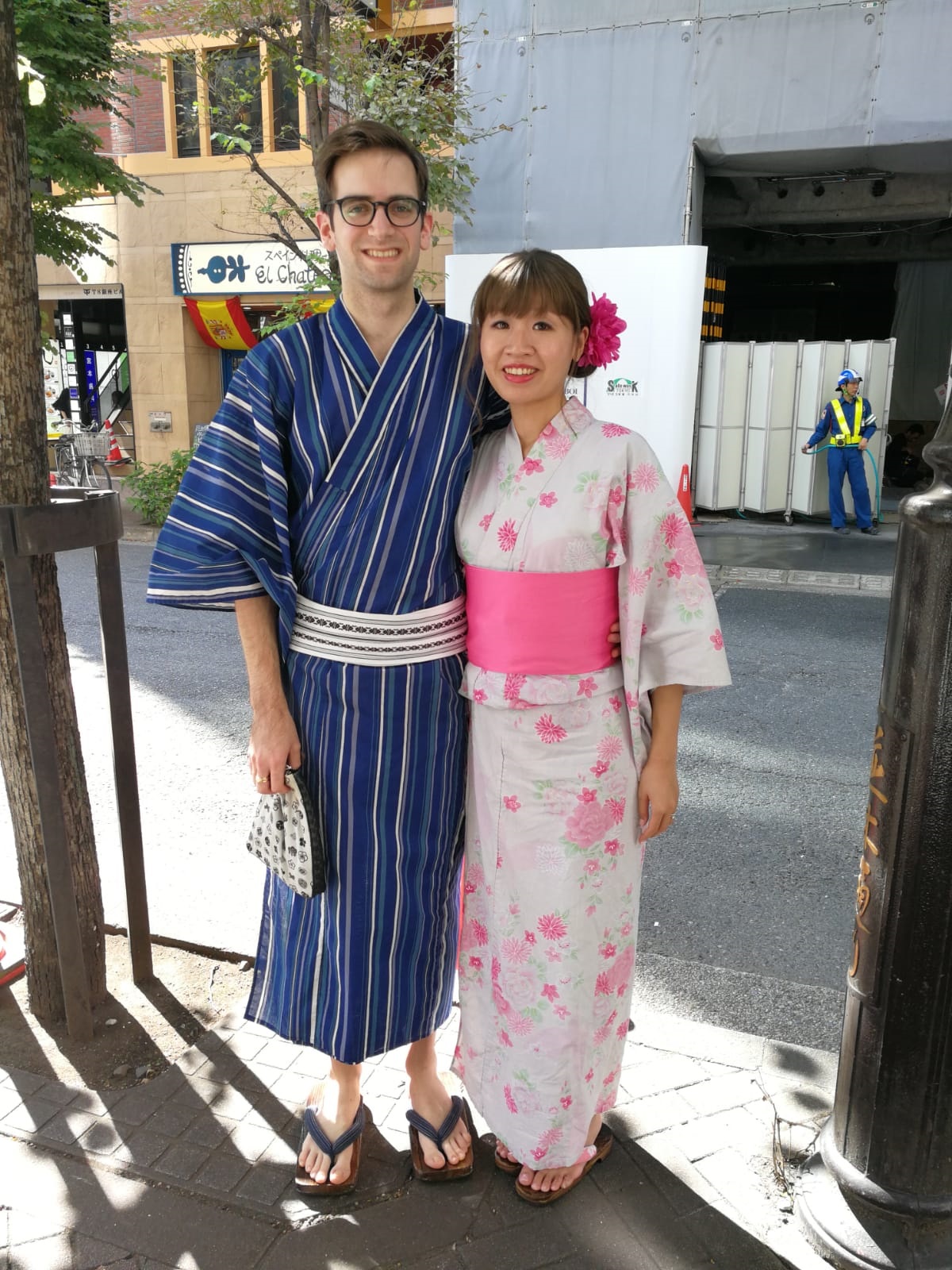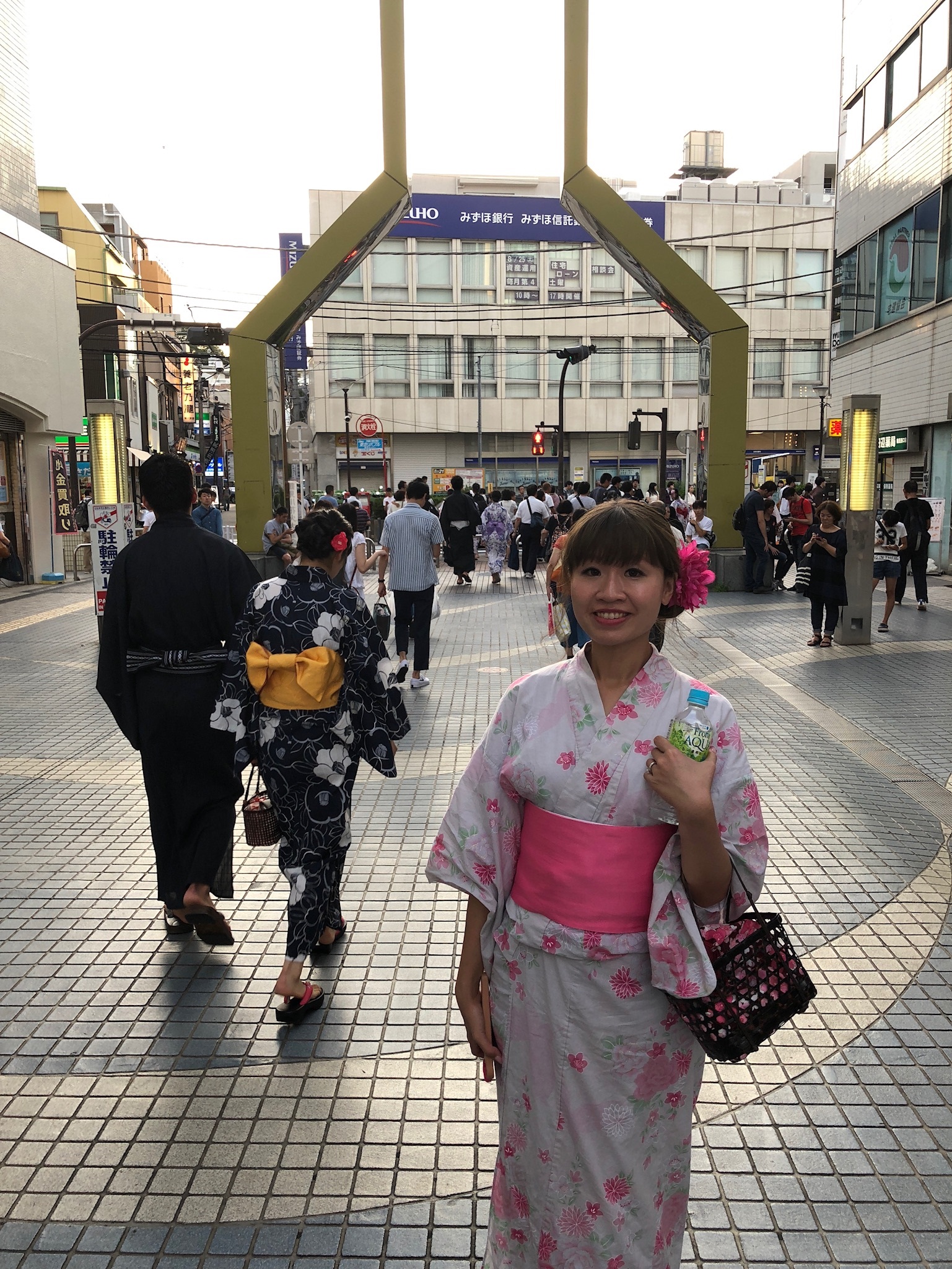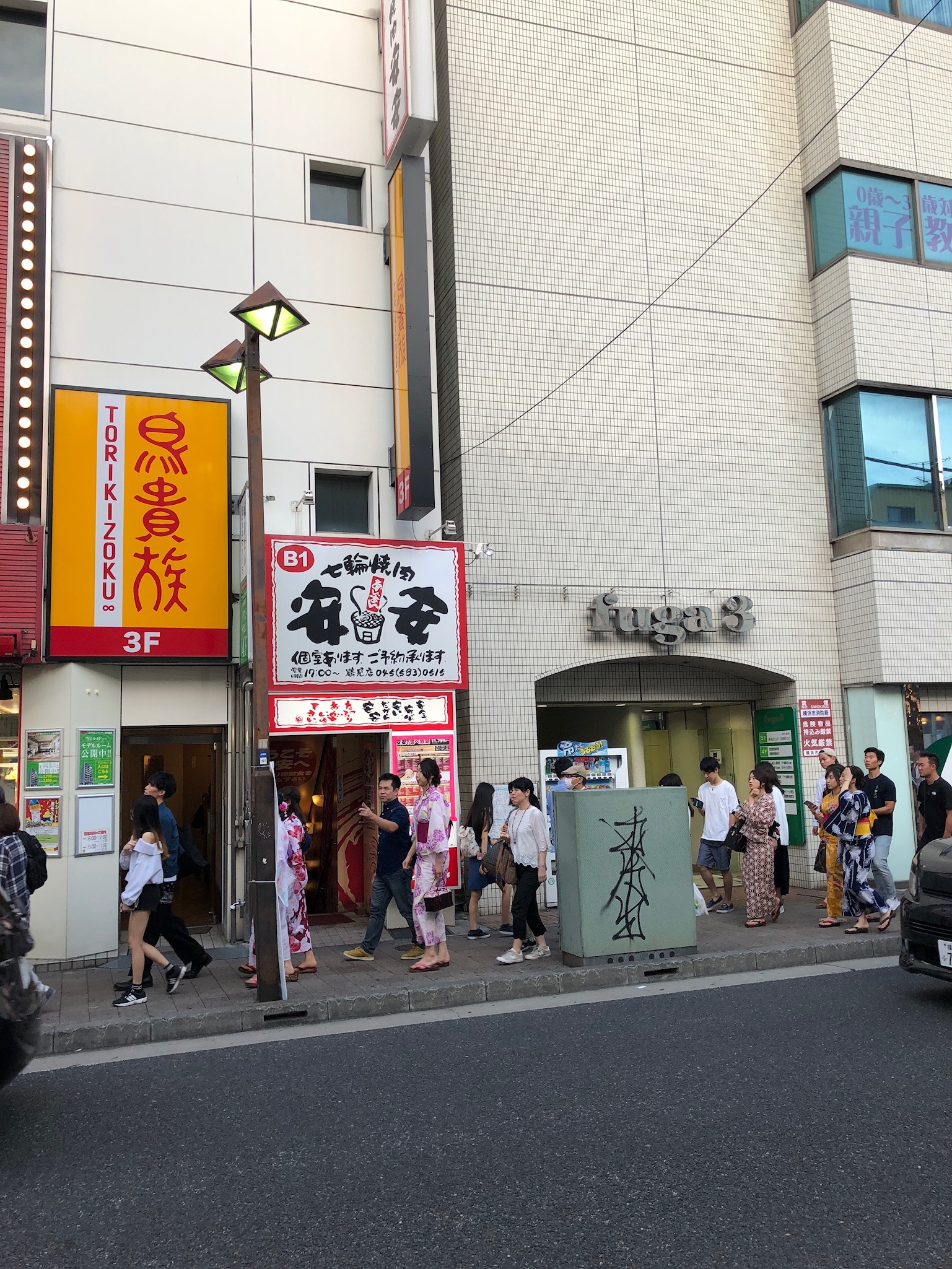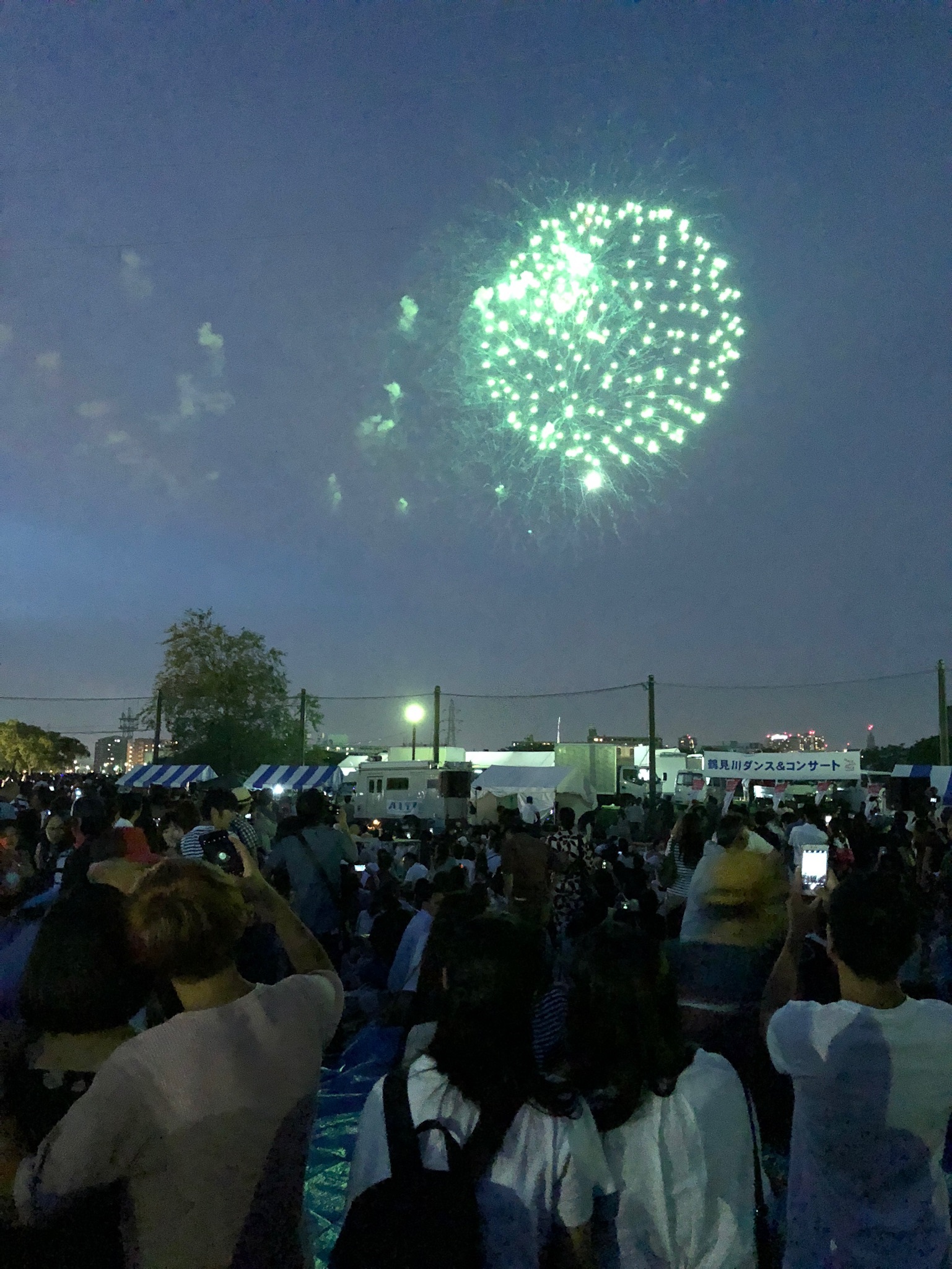A Truly Special Summer Experience in Japan
The word “summer” is synonymous with omatsuri in Japan. Since we happened to be visiting Tokyo in the summer this year, attending an omatsuri was on the top of my to-do list for this trip. Not only did I get to experience an omatsuri in a traditional yukata, I also got to discover Yokohama.
Omatsuri, which means festival in Japanese, can be celebrations of special holidays like Obon (a day to commemorate one’s ancestors) or just for fun. These festivals are usually filled with food stands selling traditional food like okonomiyaki and takoyaki, games, and sometimes a firework show. The thought of summertime in Japan usually conjures up images of people dressed in yukatas hanging out at these festivals.
The crowd at the Tsurumi firework festival.
Some people opt to buy a yukata, but thankfully, if you just want to try one, many rental places exist to serve that need. Moshi Moshi Nippon has an excellent guide to such companies, and that’s where I found my yukata rental, VASARA.
I ended up choosing VASARA because not only do they have English language support online and at the store but they also have affordable rental packages that include accessories and hair arrange service and an online reservation system. The main draw for us was their couple’s package starting at 6,800 yen. Some packages are only displayed on the Japanese site, not the English site, however, so make sure you are booking the package you want. If you do reserve the wrong package, you can email them to cancel it and they are very quick with their responses in my experience. VASARA also has a large selection of yukatas in many colors. While you can request a specific style, it’s not guaranteed that it would be available on the day of your appointment.
My husband and I standing in front of the building where our VASARA outpost was in Ginza.
The rental packages are available at four levels—standard, one star, two stars, and three stars—which represent how fancy the yukata, accessories, and hairstyle are. I loved that we had the flexibility to upgrade our plan on the day-of at a relatively small cost. When we arrived at the appointment, a staff member showed us where each section belonged to which level and encouraged us to look in other sections if our selected one didn’t have what we wanted. I ended up upgrading because all the standard yukatas in pink had been rented. Locals also rent yukatas, so yukatas do run out and VASARA can be very busy on festival days. While they accept walk-ins, it’s better to reserve a time to visit in advance.
The staff at VASARA helped me put on many layers of undergarments, yukata, and obi (sash), and gave me a tote bag to put my belongings. You could either store it with them (and pick it up before they close), or you could take it with you. VASARA offers an overnight rental for their yukatas at 900 yen per yukata, which is really helpful because festivals usually run well into the night and it would be a hassle to have to run back to the store before 8 p.m. They also have many locations throughout Tokyo (even some in Kyoto and Osaka), including one in Ginza, which was the closest one to our hotel in Shiodome. We were able to drop off our stuff before heading to our event—the firework festival in Tsurumi.
On the train to the omatsuri in Tsurumi, a ward in Yokohama.
Tsurumi, a ward in Yokohama, is only 40 minutes away by train via the JR Keihintohoku Line from Shimbashi Station, but we felt as if we had traveled somewhere much farther away. The streets are narrower, less crowded, and lined with cute little restaurants and izakayas. We saw a lot of residences as we walked towards the festival in Tsukuno Park as well. It was a place where I imagined people would move to to have a family and settle down.
The festival started at 10 a.m. and ran until the end of the firework show at 7:45 p.m. Many people were heading towards the festival at around the same time as we did at 5. We saw many people lining up to get food at street vendors in front of Tsukuno Park and thought it strange since there were food stands at the festival. When we arrived at the festival, we realized why: The lines for food wrapped around not one, not two, but three times! It was so bad that they stationed a staff member at the end of each line to let people know what food their line was for.
We got in line for yakisoba, but the line moved forward ever so slowly, and eventually the firework show started while we were still in line. Then the unfortunate thing happened: Someone from the front passed down the message that they were out of yakisoba! Now we know to get to the festival early to get food or pick up food along the way to the festival.
Despite the food fail, we enjoyed the firework show and had a good time. Everyone oohed and ahhed at every new firework shot into the sky. Couples in yukatas leaned on each other and looked up at the night sky together. It was a romantic and communal experience at the same time.
Attending this omatsuri wearing a yukata made me feel one with the crowd, like we were all sharing a special moment together even though we didn’t know anyone else there. Of course, people went to this omatsuri in normal clothes too, but for foreign visitors like us, wearing a yukata was like a sign to others that we respected their culture and were excited to partake in this tradition.
We were lucky enough to participate in another tradition after we left the festival: The post-omatsuri meal at a fast food restaurant. We stopped by the Mos Burger near the train station, and soon realized that many young people donning yukatas were sharing a meal with their friends or significant others there after the omatsuri. Being there made us feel not only super young and hip but also that we were part of something bigger, we were part of this crowd. This is another tradition not to be missed!
The yakiniku rice burger at Mos Burger. Highly recommended!
This was the perfect end to our brief trip to Tokyo, and it’s also the finale of this Kawaii Life series. Thank you for sticking with me till the end, and I hope you learned a thing or two that will help you plan your next trip to this wonderful city!












